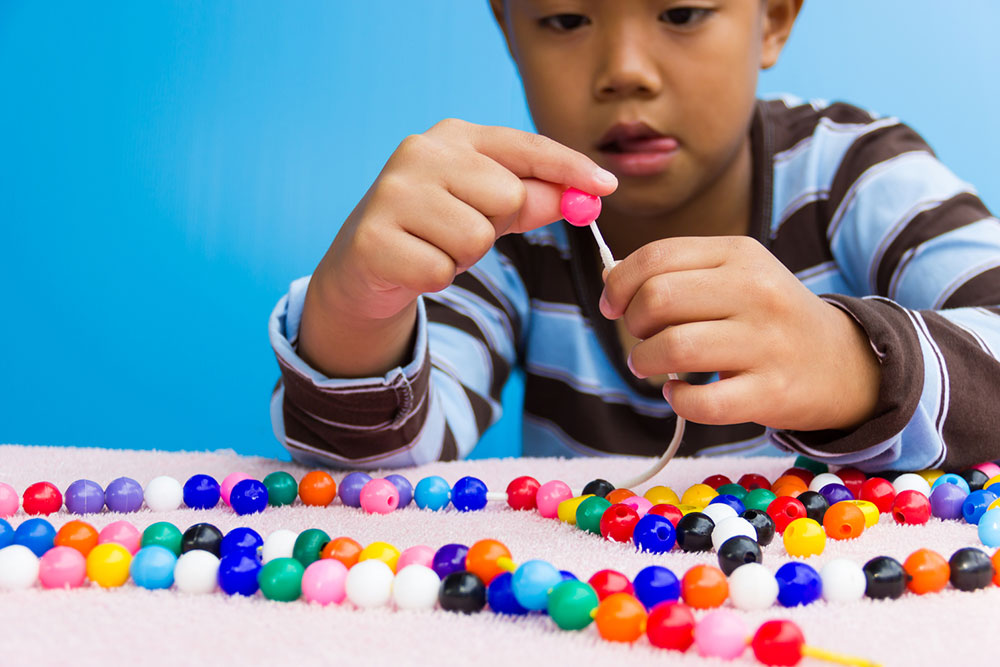
20 strategies for supporting children with ADHD
Attention Deficit Hyperactivity Disorder (ADHD) is a complex neurodevelopmental condition that affects children’s ability to focus, control their impulses, and regulate their activity levels. Navigating the challenges of ADHD requires a multifaceted approach, encompassing a range of strategies that can empower children and their families. By understanding and implementing these strategies, parents, educators, and caregivers can create an environment that nurtures the unique strengths and potential of every child affected by ADHD.
Here are a few ways to support children with ADHD:
1. Establishing a structured routine
Providing a consistent framework helps children anticipate and navigate their day, fostering a sense of stability. A well-structured routine aids in reducing anxiety and providing a clear set of expectations. This routine should include specific times for waking up, meals, homework, play, and bedtime. Consistency helps children feel secure and understand what to expect each day.
2. Making use of visual aids and timers
Visual tools aid in organizing tasks and managing time, aiding children in completing responsibilities efficiently. Timers provide a visual representation of time, helping children understand and manage their tasks more effectively. Visual aids can include chore charts, calendars, and task lists. Timers, especially ones that visually represent the passage of time, help children grasp the concept of time and improve time management skills.
3. Implementing positive reinforcement
Encouraging positive behaviors with rewards, whether through praise or privileges, can motivate children to exhibit desirable actions consistently. Positive reinforcement helps build a child’s confidence and self-esteem. Specific and immediate rewards work best. Praise, extra playtime, or small treats can motivate children with ADHD.
4. Incorporating regular physical activity
Physical exercise helps release endorphins, promoting focus, mental clarity, and improved cognitive function. It provides an outlet for excess energy and supports overall well-being. Activities like jogging, swimming, or team sports can be particularly beneficial. Regular exercise can also improve sleep quality and regulate mood.
5. Practicing mindfulness and relaxation techniques
Teaching relaxation exercises and mindfulness practices enables children to manage stress and enhance concentration. These techniques empower children to stay present and engaged. Techniques like deep breathing exercises, progressive muscle relaxation, or guided imagery can be effective. Regular practice can help children cope with stress and maintain focus.
6. Providing nutrient-dense meals
A balanced meal rich in essential nutrients supports cognitive function and aids in maintaining optimal brain health. Omega-3 fatty acids, found in fish, nuts, and seeds, have been linked to improved focus and cognitive function. Emphasize whole foods like fruits, vegetables, lean proteins, and whole grains. Minimize processed foods, sugars, and artificial additives.
7. Minimizing distractions
Creating a focused environment by minimizing clutter and reducing exposure to distractions supports sustained attention. A clutter-free space allows children to concentrate better on their tasks. Designate a quiet, well-organized study area free from electronic devices, loud noises, and other potential distractions.
8. Breaking tasks into manageable steps
Breaking down complex tasks into smaller, more achievable steps helps prevent children from feeling overwhelmed. It provides a clear path to completing assignments or chores. Guide children in creating a step-by-step plan for tasks. This approach makes large tasks feel more manageable and increases the likelihood of successful completion.
9. Utilizing cognitive behavioral techniques
Cognitive behavioral therapy techniques assist children in recognizing and modifying negative thought patterns and behaviors. This can help them manage impulsivity and improve self-control. Encourage children to identify and challenge negative thoughts or behaviors. Replace them with positive affirmations and constructive actions.
10. Encouraging creativity and expression
Engaging in creative activities provides an outlet for energy and a means of self-expression. Art, music, or other creative pursuits can be therapeutic for children with ADHD. Provide various creative materials and encourage children to explore different forms of artistic expression. This can be a constructive way for them to channel their energy.
11. Prioritizing adequate sleep
Ensuring children receive sufficient rest is essential for cognitive function and overall well-being. A regular sleep schedule helps regulate mood and behavior. Establish a consistent bedtime routine and limit screen time before bed. Create a calm, relaxing environment conducive to sleep.
12. Offering sensory tools
Sensory tools like stress balls or weighted blankets can provide sensory stimulation, aiding focus and attention. These tools can offer comfort and support for children who benefit from sensory input. Pay attention to the sensory preferences of the child. Some children may find fidget toys helpful, while others may benefit from weighted blankets or sensory-friendly clothing.
13. Setting realistic goals
Encouraging children to set specific, attainable goals fosters a sense of accomplishment and direction. It helps them build confidence and a sense of autonomy. Guide children in setting SMART (Specific, Measurable, Achievable, Relevant, Time-Bound) goals. Celebrate their achievements, no matter how small.
14. Cultivating patience and empathy
Demonstrating understanding and patience nurtures a positive and supportive environment for children with ADHD. It helps build trust and a sense of security. Practice active listening, validate their feelings, and provide reassurance. Show empathy for their challenges and offer encouragement.
15. Fostering a supportive environment
Establishing open communication and flexibility creates an inclusive environment that allows children to thrive. Providing a safe and understanding space helps children feel valued and supported. Encourage open conversations about feelings, concerns, and challenges. Be flexible in adapting strategies and routines as needed.
16. Teaching organization skills
Providing tools and techniques for organization helps children manage their belongings and responsibilities. This skill is essential for academic success and everyday tasks. Offer organizational tools such as planners, labeled storage bins, and color-coded folders. Teach children how to use these tools effectively.
17. Encouraging self-advocacy
Teaching children to express their needs and preferences fosters independence and confidence. It empowers them to take an active role in their education and well-being. Encourage children to communicate their needs to teachers, peers, and family. Provide them with strategies for self-advocacy.
18. Seeking professional guidance
Consulting with healthcare professionals, therapists, or educators can provide valuable insights and specialized strategies. Professional guidance ensures that children receive the tailored support they need. Work collaboratively with professionals to develop an individualized plan for the child. This may include input from pediatricians, psychologists, therapists, and educators.
19. Facilitating regular breaks
Allowing short breaks during tasks or activities can help children recharge and refocus. It prevents burnout and supports sustained attention. Set specific intervals for breaks during tasks. Encourage activities that allow the child to relax and recharge, such as stretching or deep breathing exercises.
20. Offering choices within limits
Providing children with options within defined boundaries empowers them to make decisions and develop a sense of autonomy. Offer choices related to tasks or activities, such as what to wear, which assignment to tackle first, or what snack to have. Ensure the choices align with established boundaries.




